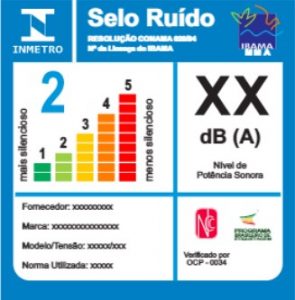Sound Power for Household Appliances
Currently, in homes, several types of appliances have highly developed technology. However, some have emission of sounds that can reach prohibitive volumes for the human being. In this case, they must have their compliance evaluated regarding their sound power.
Conformity assessment of Sound Power of Household Appliances, through the certification mechanism, is carried out by a Product Certification Body( OCP), accredited by Cgcre/Inmetro.
Household and commercial electrical appliances, assessed in terms of their sound power, are:
Vacuum cleaner;
Blender;
Hairdryer;
Other devices with this function.
These must be assessed for compliance and safety by Inmetro Ordinance 148 of March 28, 2022 – Safety of Household and Similar Electrical Appliances.
The standards applicable to the assessment of Sound Power compliance are:
Brazilian Standards:
ABNT NBR 13910-1: 1997 – Guidelines for the determination of airbone acoustical noise emitted by household and similar electrical appliances – Part 1: General requirements General requirements;
ABNT NBR 13910-1: 1998 – Guidelines for the determination of airbone acoustical noise emitted by household and similar electrical appliances – Part 2: Particular requirements for hairdryers;
ABNT NBR 13910-2-2: 1998 – Guidelines for the determination of airbone acoustical noise emitted by household and similar electrical appliances – Part 2: Particular requirements for blenders;
International Standards:
ISO 3741: 2010 – Acoustics – Determination of sound power levels and sound energy levels of noise sources using sound pressure – Precision methods for reverberation test rooms;
ISO 3743: 2010 – Acoustics — Determination of sound power levels and sound energy levels of noise sources using sound pressure — Engineering methods for small movable sources in reverberant fields — Part 1: Comparison method for a hard-walled test room;
ISO 3744: 2010 – Acoustics – Determination of sound power levels and sound energy levels of noise sources using sound pressure – Engineering methods for an essentially free field over a reflecting plane;
IEC 60704-2-1/2000 – Household and similar electrical appliances – Test code for the determination of airborne acoustical noise – Part 2-1: Particular requirements for vacuum cleaners.
The sound power level is determined by comparing the measured sound pressure levels produced by the source being tested with the sound pressure levels produced by a reference sound source under the same environmental and physical conditions.
For each type of household appliance, the equivalent sound pressure level is determined in weighted decibels – dB (A) and compared with the specific tables, per appliance, of the ranges of sound power levels, classified from 1 to 5, the lowest level for the highest level of sound power. As shown below:

The certification model used for these appliances is Model 1ª, which establishes a single assessment consisting of tests on samples taken from the manufacturer. This model does not include the maintenance step.
The conformity assessment of the certification object is carried out only once and the Certificate of Conformity issued does not cover subsequent production items.
Therefore, when choosing a home appliance, the consumer must consider it necessary to observe the Sound Power produced by the equipment to guarantee safety and comfort, that is, a certified item.
Source: Inmetro Ordinance No. 6, of January 05, 2022
